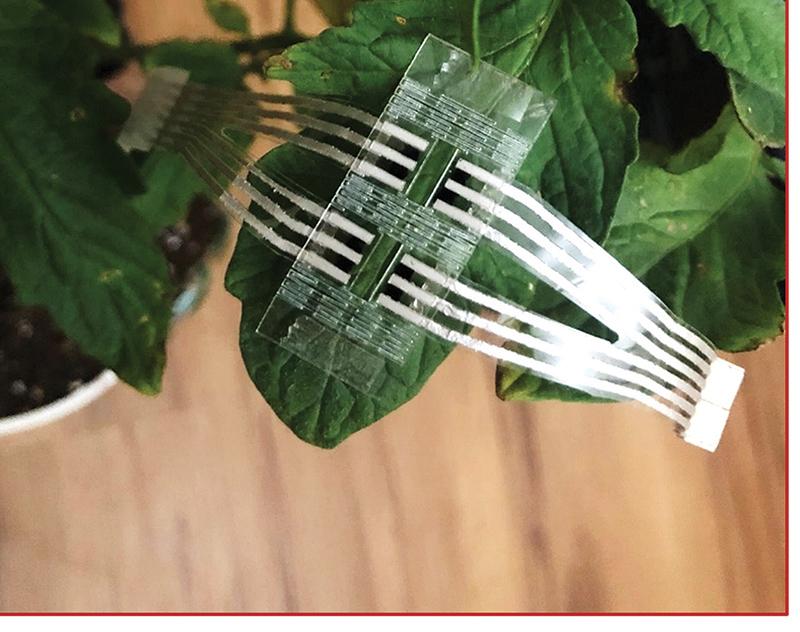Wearable sensor can patch up plants to detect disease or stress
A ‘wearable’ patch that can monitor and detect plant diseases or other stresses, such as crop damage or extreme heat, in real-time could aid precision or controlled agriculture.

A ‘wearable’ patch that can monitor and detect plant diseases or other stresses, such as crop damage or extreme heat, in real-time could aid precision or controlled agriculture.
The sensor patch with a kirigami structure is said to be insensitive to common mechanical perturbations such as wind blowing and hand touching, while detecting a plant’s gas emissions.
‘We have developed a flexible volatile organic compound (VOC) sensor patch to detect the gas emitted by plants,’ explains Professor Yong Zhu of the Department of Mechanical and Aerospace Engineering at NC State University (NCSU), USA. ‘We found that the [tomato] plant would emit an abnormal level of gas when under stress such as damage and infections by disease. Using this sensor patch, we found that we can non-invasively monitor the gas emission level and obtain early signals of a plant’s unhealthy status.’
The sensing device is made of flexible silver nanowire electrodes on a kirigami-inspired stretchable substrate containing graphene-based sensors. The sensors are coated with various chemical ligands that respond to the presence of specific VOCs, allowing the system to detect and measure them in gases emitted by the plant’s leaves.
‘Chemi-resistive materials can change their resistance when exposed to VOC gases,’ Zhu explains. ‘We use highly sensitive chemi-resistive materials – reduced graphene oxide (rGO) functionalised with different VOC detection ligands – to fabricate a gas sensor array to detect and distinguish the profiles of multiple VOC gases emitted by plants, so that the change in the gas emission level caused by stress and disease can be captured by the sensors.’
He adds, ‘The highly sensitive chemical ligand-modified rGO responds differently to diverse VOC gases due to the different chemical ligands in the sensing materials.
‘This ensures the sensitivity and specification for the detection and distinguishment of the plant's gases.’
The highly-conductive and stretchable silver nanowires, used as soft electrodes and interconnects, are critical for reliable data acquisition under mechanical perturbations, which are inevitable for wearable applications.
To protect the plants they monitor, the team has made the patch light-weight and non-invasive. In addition, it can be attached to the leaf’s surface with a biocompatible adhesive, and most parts of the device are transparent, so it will not block the sunshine.
Systematically tested in laboratory settings, the array demonstrates simultaneous detection and classification of 13 individual plant volatiles.
Zhu notes, ‘Using this sensor platform, early detection of plant infection (within four days of inoculation) and abiotic stresses, such as mechanical injury on different parts of tomato plants, were achieved by in situ monitoring of plant VOC emission in a real-time fashion.’
The team will now look to improve the patch by integrating other sensors for temperature, humidity, etc. into the system to develop a multi-modal platform for more comprehensive evaluation of plant health.







